Took me a while to realize what you mean by "High Pass Filter". When engineers say HPF, they usually refer to frequency domain, therefore HPF in context of your question is confusing.
Now, what you want to do is to provide a low impedance path to the ground when the voltage on some USB pin gets below 1.5V, right? I'm sure that there are many ways to do this, but one which is the most obvious for me:

simulate this circuit – Schematic created using CircuitLab
You will have to find appropriate transistors based on your application (currents, voltages, speed).
When \$V_{in} \geq 1.5V\$ the comparator outputs low voltage:
- NMOS is closed (effectively behaving as an open circuit)
- PMOS is open (effectively behaving as a short circuit)
When \$V_{in} < 1.5V\$ the comparator outputs high voltage:
- NMOS is open (short circuit). The voltage of \$V_{out}\$ will be pulled to ground.
- PMOS is closed (open circuit). This will ensure that \$V_{in}\$ itself is not shorted to ground.
NOTE: I assumed here some generic comparator which can output both high and low voltages. I can't suggest any specific part without additional info, therefore it's up to you to find an appropriate one. However, as Johnny B Good indicated in his comment, if you want to use an IC comparator (one chip solution), you need to make sure that it can switch rail-to-rail. This is essential because many comparators employ "open collector" output which goes "high impedance" instead of "high voltage" (these can be made a rail-to-rail by adding additional external circuitry). This is not an issue with comparators built around generic op-amps.
